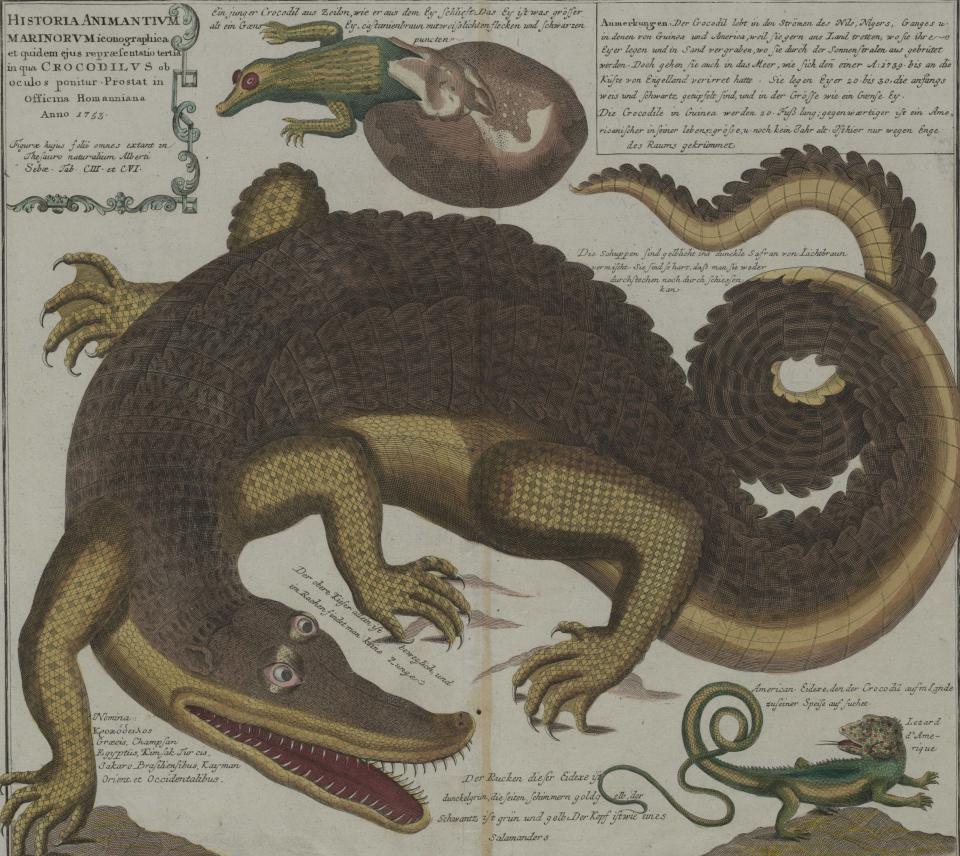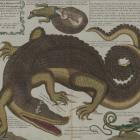
Broadsheet from woodcut: “History of Sea Creatures: Crocodile,” 1753. (Unknown artist. All rights reserved. Courtesy of the Bavarian State Library.)
Broadsheet from woodcut: “History of Sea Creatures: Crocodile,” 1753. (Unknown artist. All rights reserved. Courtesy of the Bavarian State Library.)
Broadsheet from copperplate engraving: “History of Sea Creatures: Crocodile,” 1753.
Featured on the Environment & Society Portal with kind permission of the Bavarian State Library. Broadside catalogue, call number: Res/Slg.Faust 7.
The copyright holder reserves, or holds for their own use, all the rights provided by copyright law, such as distribution, performance, and creation of derivative works.
This illustration of a natural scientific paper from 1753 shows a full-grown crocodile and a hatching baby as well as a lizard, reportedly the crocodile’s main food. The adult animal is supposed to be an American crocodile in his natural size and around one year old, and, important to know, “it is only bent due to the lack of space.” In 1753 the crocodile was known under the following names: “κροχόδῑλος (Crocodilos) Graecis, Champsan Egyptiis, Kimsak Turcis, Iakaro Brasiliensibus, Kayman Orient et Occidentalibus.”
Oddly, the paper is part of a broader “Historia Animantium Marinorum” (History of Sea Creatures) although it is mentioned right in the beginning (explanatory notes) that “the crocodile lives in the currents of Nile, Niger, Ganges and in those of Guinea and America, because they love to come ashore where they lay eggs and bury them in the sand, where they are hatched by the sunbeams.” The explanation for including the crocodile into a history of sea creatures is given hereafter: “But they also go into the sea, one got lost in the year 1739 and appeared on the coast of England.” We also receive the information that “they lay 20 to 30 eggs that are speckled white and black and have the size of geese eggs” and that their scales are “yellowish to dark saffron and mixed with light brown” and “so hard they can neither be pierced nor shot through”. Call number: Einbl. Res/Slg.Faust 7.


